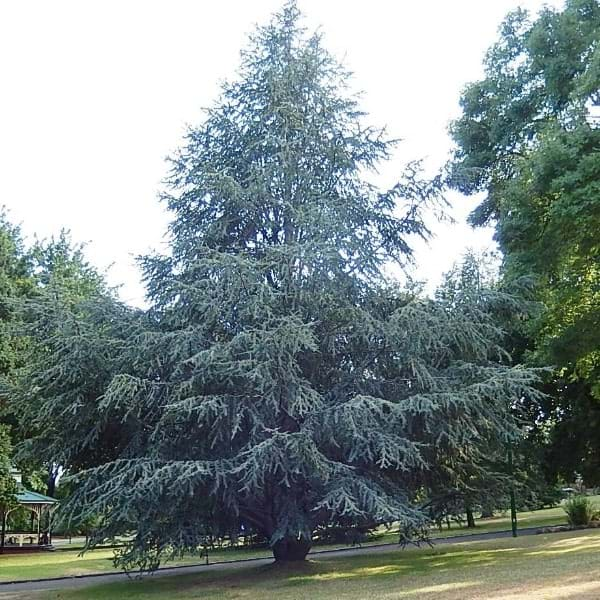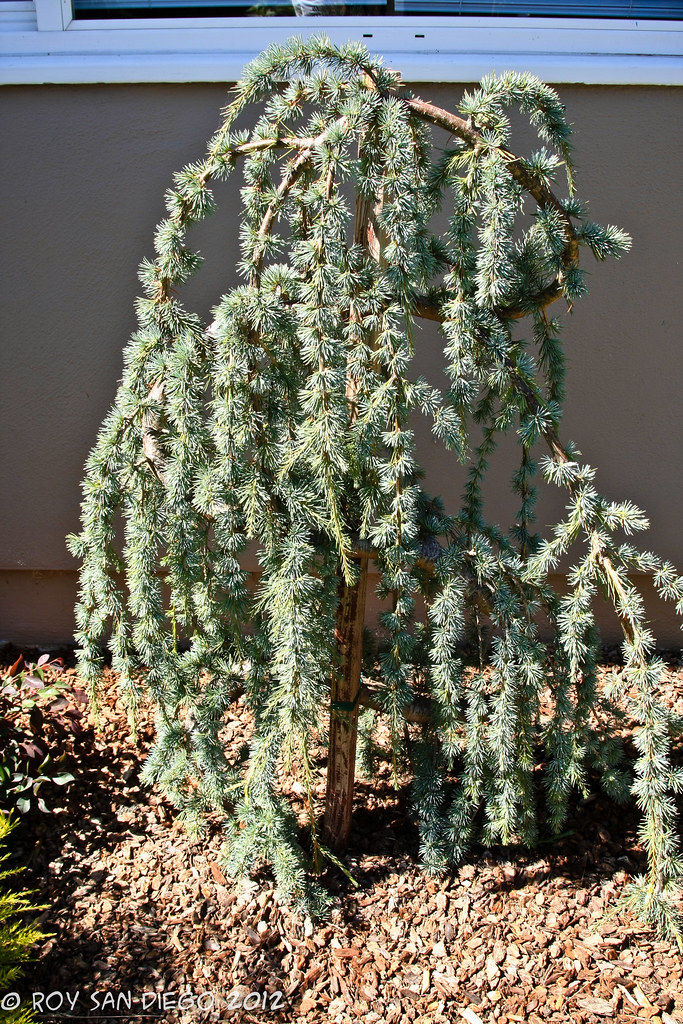

It is also a good idea to shelter the tree from exposure to strong.

#Weeping blue atlas cedar full#
For best results plant this tree in full sun, though it can tolerate some shade if needed. Note: We also carry the 'Serpentine' form of this variety - achieved by careful pruning - which makes an interesting 6-10' patio tree. People also ask, how do you plant a weeping blue atlas cedar Growing Tips Weeping blue Atlas cedar prefers well-drained, acidic loam soil, though it can adapt to many other types of soil. Its drooping habit and height can be controlled by deft pruning of the central leader it even takes to espalier.

See more ideas about weeping blue atlas cedar, blue atlas cedar, plants. From a living waterfall to a grazing, bluish, woolly mammoth, plants respond to the whimsy of their designers. Native to the Atlas Mountains in northern Africa.With age, this distinctive weeping variety of Blue Atlas Cedar will produce horizontal branches that spread to 12' wide, dropping a curtain of pendant branchlets to the ground. Explore just kay's board 'Weeping Blue Atlas Cedar' on Pinterest. Weeping Blue Atlas Cedar Cedrus atlantica ‘Glauca Pendula’ has an extremely pendulous habit that can be staked or trained to conform to any shape.
 Performs best in full sun in medium moisture, well-drained soils. During May and June the females lay hundreds. The blue-green foliage of this evergreen covers the weeping branches. A true centerpiece to any landscape, the Weeping Blue Atlas Cedar tree reaches a mature height of just 10-15 feet with gracefully pendulous branches, making it perfect for even smaller yards. Other specimens present in the world all. Healthy Weeping Blue Atlas Cedar trees are also resistant to both pests and diseases. But a mutation appeared giving a weeping character that tree. Twisting and turning branches Cedrus atlantica glauca Pendula The popular Weeping Blue Atlas Cedar is a dramatic, pyramidal tree with clusters of short. The adult females are dome shaped, black or dark brown and 1/3 inch in diameter. 150 years ago, a nurseryman planted blue Atlas cedar. Though very common in citrus trees, black scale frequently invades a variety of other trees and shrubs including the blue atlas cedar. tall and wide (90-360 cm), although its size depends highly on its training. Black scale, Saissetia oleae, is among the most damaging of tree pests. Photos taken at Longwood Gardens - Kennette Square, PA, BioPark Botanic Garden - Albuquerque, NM, Stanford University. Winner of the prestigious Award of Garden Merit of the Royal Horticultural Society. A terrific living sculpture in the landscape. It is spectacular trained to form an archway, espalier, ground cover, or as a magnificent specimen. per year (30-60 cm), this Blue Atlas Cedar can be staked or trained to form any shape you wish, from narrow-upright (if staked) to cascading in a variety of directions. Its dense limbs are thickly covered with clusters of short, steel-blue needles, adding charm to this picturesque tree. Cedrus atlantica 'Glauca Pendula' (Atlas Cedar) is a stunning evergreen coniferous tree of pendulous habit adorned with a serpentine leader bearing gracefully weeping branches.
Performs best in full sun in medium moisture, well-drained soils. During May and June the females lay hundreds. The blue-green foliage of this evergreen covers the weeping branches. A true centerpiece to any landscape, the Weeping Blue Atlas Cedar tree reaches a mature height of just 10-15 feet with gracefully pendulous branches, making it perfect for even smaller yards. Other specimens present in the world all. Healthy Weeping Blue Atlas Cedar trees are also resistant to both pests and diseases. But a mutation appeared giving a weeping character that tree. Twisting and turning branches Cedrus atlantica glauca Pendula The popular Weeping Blue Atlas Cedar is a dramatic, pyramidal tree with clusters of short. The adult females are dome shaped, black or dark brown and 1/3 inch in diameter. 150 years ago, a nurseryman planted blue Atlas cedar. Though very common in citrus trees, black scale frequently invades a variety of other trees and shrubs including the blue atlas cedar. tall and wide (90-360 cm), although its size depends highly on its training. Black scale, Saissetia oleae, is among the most damaging of tree pests. Photos taken at Longwood Gardens - Kennette Square, PA, BioPark Botanic Garden - Albuquerque, NM, Stanford University. Winner of the prestigious Award of Garden Merit of the Royal Horticultural Society. A terrific living sculpture in the landscape. It is spectacular trained to form an archway, espalier, ground cover, or as a magnificent specimen. per year (30-60 cm), this Blue Atlas Cedar can be staked or trained to form any shape you wish, from narrow-upright (if staked) to cascading in a variety of directions. Its dense limbs are thickly covered with clusters of short, steel-blue needles, adding charm to this picturesque tree. Cedrus atlantica 'Glauca Pendula' (Atlas Cedar) is a stunning evergreen coniferous tree of pendulous habit adorned with a serpentine leader bearing gracefully weeping branches.








 0 kommentar(er)
0 kommentar(er)
